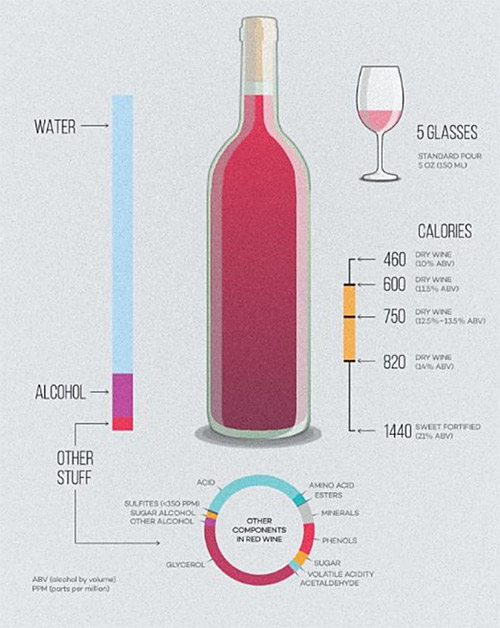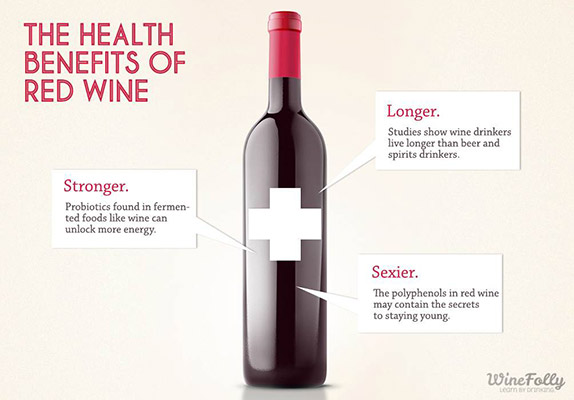
Wine & Mindfulness?
Tasting an excellent wine can become a perfect occasion to practice mindfulness and enjoy every single aspect of the experience. This is especially true if you’re sipping an organic chianti wine in a beautifully peaceful Tuscan vineyard. In a recent article we talked about wine and mindfulness and how important it is to be fully present and non-judgmental to experience life at a completely different level.
In this article, we would like to go deeper and talk about the main components of wine, how these components affect us physically and emotionally, and how they can have a positive impact on our health when drinking wine mindfully.
We, as human beings, are chemically made of neurotransmitters that transmit signals throughout the body that control behavior, emotion, thought and processes and wine is made of components that affect some of these neurotransmitters and consequentially our behavior and emotion.
The neurotransmitters that affect our happiness
According to science, the main neurotransmitters that affect our happiness are dopamine, serotonin, endorphins and oxytocin.
Of course, generally speaking, being in a positive state has significant impact on us chemically and on our motivation, productivity, and wellbeing. But there are many events through which we can intentionally trigger these neurotransmitters and cause them to flow like wine.
Serotonin
Serotonin affects our mood, memory, sleep, body temperature, appetite and when we are happy it flows through us. When serotonin is low or absent we can feel lonely or depressed and the lack of serotonin can cause several disorders such as anxiety, social phobia, and so on.
- Achieving important steps in life and reflecting on past significant achievements can increase the level of serotonin as usually our brain is not capable of perceiving the difference between what’s real and what’s not and it produces serotonin in both cases.
- Practicing gratitude every day is definitely a good way of keeping us positive and happy.
- Expose ourselves to the sun for 20 minutes by going for a walk or lunch/coffee outside is another way to produce serotonin.
Dopamine
Dopamine is related to pleasure and joy and it helps us to take action toward goals, desires, and needs. Usually low levels of dopamine are connected with procrastination, insecurity, and lack of enthusiasm. There are several things you can do to increase dopamine levels, and thus increase your motivation:
- Break big goals down into little tasks and always reward yourself with some nice present whenever you meet a small goal. For example, you can buy a bottle of wine (we happen to know a great Italian vineyard where you can buy organic wines online), get a massage or head to your favorite shop or restaurant.
Oxytocin
Oxytocin is a hormone that is released by mothers during childbirth and breastfeeding and by women and men during orgasm. It helps build strong and healthy relationships. When we receive a gift or when we give someone a hug*, our oxytocin levels can increase.
Endorphins
Endorphins are liberated in response to pain and stress and help to alleviate anxiety and depression. Similar to morphine, they act as a sedative and analgesic, lessening our perception of pain. You can increase these substances through:
- Laughter, including the anticipation and expectation of laugher, e.g., attending a stand-up comedy, watching a funny movie etc.…
- Regular exercise
*According to Dr. Paul Zak inter-personal touch raises oxytocin, reduces cardiovascular stress and improves the immune system.
Now the main components of wine
The wine is made mostly of water, but what makes you feel a little loose and happy after the first glass is ethanol alcohol. But that’s not all. Wine consists of a long list of ingredients as shown in the image below. The most important ones are: acid, esters, minerals, sugar, glycerol, sulphites, amino acid and phenols.
Phenols are antioxidants that contribute to the aromas and tastes in wines. They are very effective in preventing the action of free radicals, and thus the early cells aging. They have anti-cancer effects and can reduce inflammations such as coronary artery disease.
They can be found predominately on fruits and vegetables. Grapes is one of the fruit that has the highest level of phenols. The quantity of phenols will depend on several factors: the grape variety, the environmental conditions under which the grapes grow, diseases that can affect the grape and the wine making process.
There are different types of phenols: natural phenols and polyphenols. Natural phenols can be divided into flavonoids and non-flavonoids. Flavonoids include the anthocyanins and tannins which affect the color and taste of the wine. The non-flavonoids include the stilbenoids such as resveratrol and phenolic acids such as benzoic, caffeic and cinnamic acids.
In red wine the phenolic content is higher than in white wine due to the lesser contact with the skin during the winemaking process of white wine. Up to 90% of the wine’s phenolic content is made of flavonoids that are present in the stems, seeds and skins and they are often drained from the grape during the maceration period of winemaking. These compounds contribute to the astringency, color, the sensitivity to the oxidation and taste of the wine. Also, they function as a preservative for the wine.
A research of 2010 published in the European Journal of Clinical Nutrition has listed 452 types of food that contain 502 different types of polyphenols. Amongst those with the highest content of polyphenols there are: seasonal fruits and vegetables, wine, cocoa, green and black tea, nuts, several seeds, soy products, cold pressed extra virgin olive oil and so on.
Learn more about the components of wine with this great article – “What Goes Into Your Glass of Wine”.
How wine affects us chemically and emotionally
Wine directly affects our chemical compounds by altering levels of neurotransmitters. Alcohol affects both “excitatory” neurotransmitters and “inhibitory” neurotransmitters.
Wine increases the release of dopamine and serotonin in our brain as all pleasurable activities do including, for example, going out with friends, getting a promotion at work, going on holiday, and so on. By raising dopamine levels in our brain, wine can make us feel good. But it is important to outline that if you keep drinking above a certain level you are going to alter other brain chemicals that can determine feelings of depression. For this reason, it is very important to drink moderately and not exaggerate as the counter effect of this would be to deplete your dopamine and serotonin levels, and it can actually lead to depression.
Moreover, we have to keep in mind that what gives comfort can differ across age, gender, culture and psychological factors as a result of life experiences. Each hormone or neurotransmitter in the brain has to connect to receptors to make it active and these receptors aren’t the same in everyone. This means that the positive and negative effects of wine and, more generally alcohol, can vary from one person to the other depending on the factors indicated above.
The benefits of a good red wine for our health
According to a study of Neil Shay, some red wines and in particular the ellagic acid contained in these wines helps reducing the fatty liver and could help people manage health problems linked to obesity. Ellagic acid is transferred into wine in the form of ellagitannin from oak barrels and therefore the longer the exposure to oak, the more ellagic acid is dissolved into wine.
Wine raises levels of omega-3 fatty acids in our organism. Some studies involving European researchers from various countries found that regular and moderate wine drinkers had higher blood levels of omega-3 fatty acids that help to protect against coronary heart disease.
A healthy red wine habit prevents or delays cognitive decline with aging*. In a study published in the Journal of Neuropsychiatric Disease and Treatment it was reported that moderate red wine drinkers had a 23% lower risk of developing dementia compared to people who rarely or never consumed wine. Researchers from Harvard Medical School reported that red wine has anti-aging properties. Specifically, resveratrol was the compound found to have the beneficial effect.
Also, wine has been shown to help prevent breast cancer, protect against heart disease, lower the risk of contracting Alzheimer’s disease, reduce the formation of blood clot and the risk of stroke, increase memory, minimize the risk of infection by bacteria, reduce the occurrence of diabetes**.
Last but not least, it is important to outline that a perfect formula for well-being and happiness does not exist but certainly a combination of several factors can make our life better, healthier and happier. It is revealed that people who drink wine moderately, eat healthy food, exercise often held a healthier body and conduct a happier life. So moderation is the key along with awareness of what makes us feel good.
Learn more about the wine benefits in “Reasons why a small glass of wine everyday may be good for you!”.
*In a study conducted on 7,153 men and women with a mean age of 56 on 2014 has been found that women drinkers performed better than abstainers in both learning and attention.
**In an animal experiment, scientists at the Chinese Academy of Sciences discovered that resveratrol improved sensitivity to insulin. Insulin resistance is the most important critical factor contributing to type 2 diabetes risk.
So, What does “drinking a wine mindfully” mean?
The general rule of thumb in life should always be to do everything mindfully, and the same rule certainly applies to drinking wine. In this article, in particular, we want to underline the importance of enjoying drinking and being aware of how wine can affect you positively if drank moderately and with a positive and mindful approach. That is to say, you need to know what a moderate drinking style means for you* and apply it in your life while at the same time you approach a wine tasting experience by being fully present and aware of the benefits and positive sides of what you do.
And keep always in mind that life is meant to be simple and pleasant and thus we should always dedicate some time during our day to pleasant moments that makes us feel good!
*According to “Dietary Guidelines for Americans 2010”, published by the US Department of Agriculture, “If alcohol is consumed, it should be consumed in moderation – up to one drink per day for women and two drinks per day for men”.
The National Health Service, UK, writes “Men should not regularly drink more than 3-4 units of alcohol a day. Women should not regularly drink more than 2-3 units a day.” One unit equals 10ml or 8g of pure alcohol. A 250ml (large) glass of 12% red wine has about 3 units of alcohol. A 175ml (medium) glass has about two units.








Great post. I was checking continuously this blog and
I’m impressed! Very helpful info specifically the last part 🙂
I care for such information a lot. I was looking for this certain information for a long
time. Thank you and best of luck.